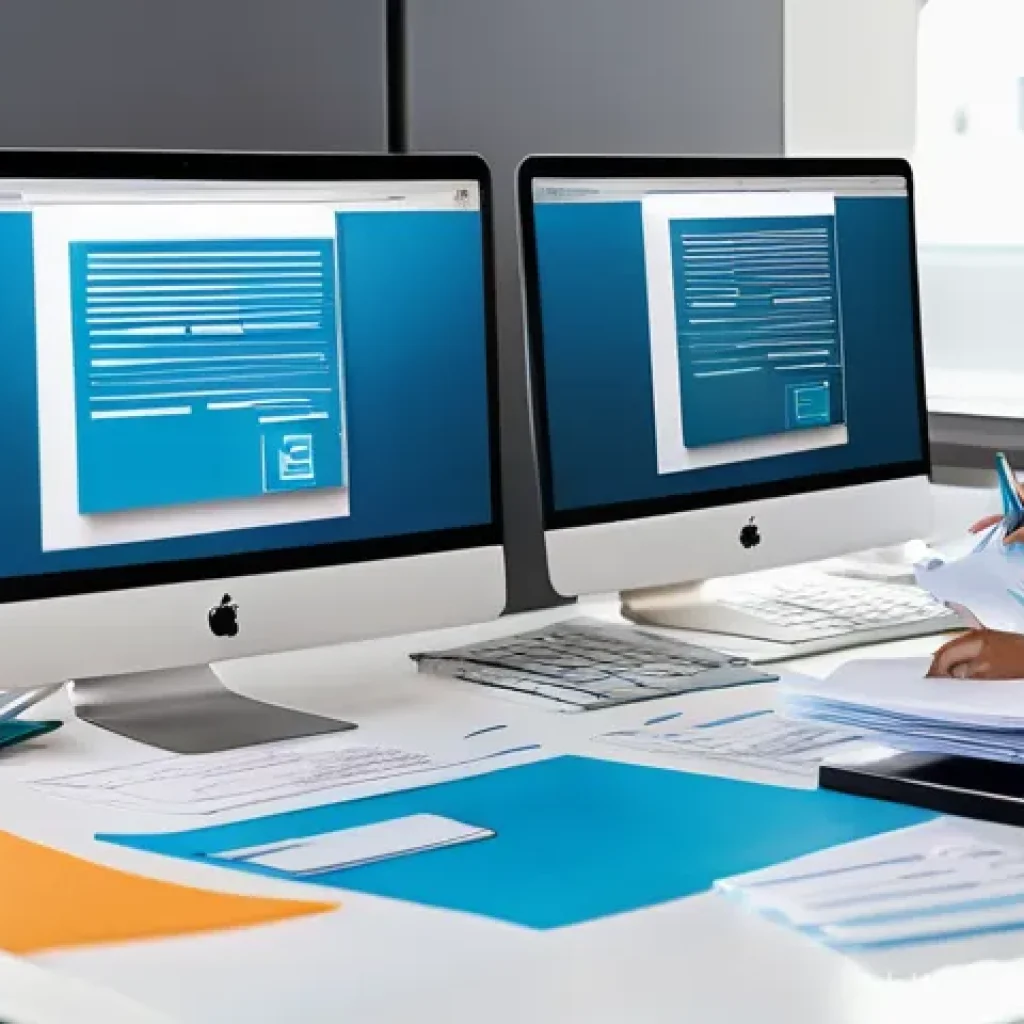Hey there, business owners and finance pros! Let’s be honest, dealing with invoices can sometimes feel like a never-ending paper chase, right? I’ve been there, staring at piles of documents, wondering if there was a better, faster, *smarter* way to manage everything.
Well, good news: the world of invoicing is undergoing a massive digital transformation, and frankly, it’s a game-changer we all need to understand. Forget just digitizing PDFs; we’re talking about a global shift towards sophisticated electronic invoicing that’s not only streamlining operations but also becoming a legal necessity in more countries than ever before.
From AI-powered automation catching errors before they even happen to real-time compliance giving you unparalleled peace of mind, the benefits extend far beyond just saving a few trees.
I’ve personally seen how embracing these advancements can dramatically boost cash flow, slash processing costs, and even strengthen those crucial business relationships.
But let’s not sugarcoat it; navigating these new mandates and integrating with existing systems can feel a bit overwhelming at first, especially for small to medium-sized businesses.
The good news is, staying ahead of the curve doesn’t have to be a headache. Ready to ditch the old ways and embrace a truly efficient future? Let’s dive in and demystify the electronic invoice issuance guide together!
Understanding the New Digital Pulse of Invoicing

Honestly, when I first heard about “electronic invoicing,” my mind immediately went to simply emailing a PDF. But oh, how wrong I was! What we’re witnessing today is a seismic shift, a complete reimagining of how businesses exchange payment requests. It’s so much more than just ditching paper; we’re talking about structured data that flows seamlessly from one system to another, without manual intervention. Think about it: your accounting software talks directly to your client’s accounts payable system, instantly. This isn’t just a convenience; it’s about accuracy, speed, and frankly, a level of financial hygiene that was previously unimaginable. I’ve personally seen companies shave days off their payment cycles just by moving to a true e-invoicing system. It’s like upgrading from snail mail to instant messaging for your finances. This transition moves us beyond basic digitization into a realm where invoices are smart, self-validating, and integrated, saving countless hours and headaches that used to come with chasing down errors or manual data entry. It’s a fundamental change that sets the stage for a much more efficient and less error-prone financial ecosystem for businesses of all sizes, making it easier to manage cash flow and focus on growth.
What Exactly is ‘True’ Electronic Invoicing?
- It’s not just a digital image; it’s structured data. This means the information on the invoice (like vendor name, amount, line items) is captured in a format that computers can understand and process automatically, usually XML or EDI, rather than just being a visual representation.
- Think of it like a universal language for invoices. Instead of a human needing to read and interpret a document, systems can natively understand and act on the data, streamlining the entire accounts payable and receivable process without manual intervention.
The Driving Force: Global Mandates and Business Benefits
- More and more countries are making e-invoicing mandatory for both B2B and B2G transactions. This isn’t just about reducing paper; it’s about governments getting real-time insights for tax compliance and reducing fraud. As a business owner, staying compliant means staying afloat.
- Beyond compliance, the benefits are genuinely transformational: faster payments, significantly reduced processing costs, fewer errors, and improved audit trails. When I started implementing this for my own operations, the sheer reduction in administrative burden was a breath of fresh air.
Navigating the Maze: Key Standards and Technologies
Alright, so you’re convinced e-invoicing is the way to go. Fantastic! But then you start looking into it, and suddenly you’re faced with acronyms like PEPPOL, EDI, and XML, and it can feel like trying to decipher a secret code. Don’t worry, you’re not alone. When I first dipped my toes into the technical side, I felt a bit overwhelmed too. The key is understanding that these are simply different frameworks or “languages” that allow your e-invoices to travel securely and efficiently between businesses and even across borders. PEPPOL, for example, is becoming incredibly popular in Europe and beyond for its standardized network, making cross-border transactions much smoother. Then there’s EDI, Electronic Data Interchange, which has been around for ages, a workhorse for large enterprises. For most small to medium-sized businesses, understanding the nuances isn’t about becoming a tech expert, but knowing that the solution you choose needs to support these standards to ensure interoperability with your partners. It’s all about making sure your invoices can “talk” to everyone else’s systems without getting lost in translation. Trust me, getting this right at the beginning saves a mountain of trouble later on, ensuring your digital documents are universally accepted.
Popular E-Invoicing Standards Explained
- PEPPOL (Pan-European Public Procurement On-Line): This isn’t just for Europe anymore! It’s an international network that simplifies electronic procurement and e-invoicing, ensuring secure and standardized exchange of documents between registered users. It’s essentially a ‘four-corner model’ that makes sure your e-invoice gets from your access point to your recipient’s access point seamlessly, even if they use different software.
- EDI (Electronic Data Interchange): A long-standing standard primarily used by large corporations for exchanging business documents. It’s robust but often requires more technical expertise and can be complex to set up. Think of it as the grand-daddy of electronic document exchange.
- XML (Extensible Markup Language): This is more of a common format for structured data, often underpinning other e-invoicing standards. UBL (Universal Business Language) and Factur-X are examples of XML-based invoice formats that are human-readable and machine-readable.
Choosing the Right Solution for Your Business
- For SMBs, cloud-based e-invoicing platforms are often the best bet. They handle the technical complexities, integration, and compliance updates for you, letting you focus on your business. When I first looked into this, the ease of setup and minimal IT overhead of cloud solutions was a huge selling point.
- Consider your typical transaction volume, your clients’ e-invoicing capabilities (do they use a specific network?), and your budget. Some solutions offer more advanced features like dispute resolution or analytics, which can be incredibly valuable as your business grows.
The Real-World Impact: How E-Invoicing Transforms Your Business
This is where the rubber meets the road, folks. Moving to e-invoicing isn’t just a technical upgrade; it’s a strategic business move that can fundamentally change how your finances operate. I’ve personally witnessed the sheer relief on business owners’ faces when they realize they no longer have to chase down late payments or deal with data entry errors that spiral into massive reconciliation nightmares. Imagine speeding up your cash flow by several days, just because your invoices are delivered, processed, and approved almost instantly. That’s not a dream; it’s the reality with effective e-invoicing. Beyond the obvious financial benefits, there’s a profound improvement in operational efficiency. Your team spends less time on tedious, manual tasks and more time on high-value activities, like strategic planning or customer engagement. This boost in productivity is invaluable. Plus, the enhanced visibility into your financial transactions allows for better forecasting and decision-making. I’ve found that the peace of mind knowing your invoices are compliant and secure is almost as valuable as the cost savings. It truly transforms what used to be a necessary evil into a smooth, efficient process that supports growth.
Boosting Cash Flow and Reducing Costs
- Faster processing means faster payments. With automated delivery and validation, the time between sending an invoice and receiving payment shrinks considerably, which is a game-changer for maintaining healthy cash flow, especially for smaller businesses.
- Significant reduction in printing, postage, and manual labor costs. Think about all the paper, ink, envelopes, and person-hours currently dedicated to traditional invoicing. E-invoicing virtually eliminates these, leading to substantial savings that directly impact your bottom line.
Enhancing Accuracy and Compliance
- Automated validation rules catch errors before they become problems, drastically cutting down on disputes and reconciliation headaches. My own experience showed that this alone saved hours of back-and-forth communication that used to plague our accounting department.
- E-invoicing solutions often come with built-in compliance features, ensuring your invoices meet regional and national legal requirements, which is a massive relief given the ever-changing regulatory landscape.
Overcoming the Hurdles: Making the Transition Smooth
Let’s be real: embracing new technology, especially something that touches the core of your financial operations, can feel a bit daunting. I’ve been through enough system migrations to know that “smooth” is rarely the default state! But with e-invoicing, many of the initial fears are easily managed with the right approach. The biggest concern I hear from business owners is usually about integrating with existing accounting software or dealing with clients who are still stuck in the paper age. And yes, those are valid points. However, most modern e-invoicing platforms are designed with integration in mind, offering connectors to popular accounting systems like QuickBooks, Xero, or SAP. For those clients who are a bit slower to adapt, many solutions offer hybrid approaches, where they can still receive a PDF, but your outgoing process is fully electronic. It’s all about finding a system that’s flexible and provides good support. Don’t try to do it all at once; a phased approach often works best, perhaps starting with your most tech-savvy clients or suppliers. The key is clear communication with your partners and choosing a vendor that offers robust onboarding and ongoing support. You’ll thank yourself later for tackling these challenges head-on.
Addressing Integration Challenges
- Many e-invoicing solutions offer pre-built integrations with popular accounting and ERP systems. Before committing, always check for compatibility with your existing software to ensure a seamless flow of data without needing complex custom development.
- If direct integration isn’t possible, look for solutions that offer API access or robust import/export functions, allowing you to automate data transfer to a significant degree, even if it’s not fully real-time.
Managing Resistance from Partners and Employees

- Communicate the benefits clearly to your trading partners: faster payments for them, fewer errors, and easier reconciliation. Many will quickly see the advantages once they understand the process.
- For internal teams, provide thorough training and highlight how e-invoicing will free them from tedious tasks, allowing them to focus on more rewarding work. My team initially grumbled, but once they saw how much time they saved, they became its biggest advocates!
Future-Proofing Your Finances with Intelligent Automation
The journey with e-invoicing doesn’t end once you’re sending and receiving digitally. The real magic, and what truly excites me about this field, lies in the evolution towards intelligent automation. We’re talking about systems that don’t just process invoices but actively learn from them. Imagine AI-powered tools that can flag potential duplicate invoices before they’re even sent, or automatically match purchase orders with receipts, reducing the need for human intervention to an absolute minimum. This isn’t science fiction; it’s happening right now, and it’s a game-changer for maintaining a lean, efficient finance department. By leveraging these advanced capabilities, businesses can move beyond mere compliance to proactive financial management. Think about the insights you can gain from real-time data, allowing for more accurate forecasting, better budgeting, and quicker identification of trends. It’s about turning your accounts payable and receivable into strategic assets rather than just cost centers. I genuinely believe that businesses embracing these intelligent automation features will not only survive but thrive, setting themselves apart in a competitive landscape by achieving unprecedented levels of efficiency and financial control.
Leveraging AI and Machine Learning in E-Invoicing
- AI can dramatically improve data extraction, ensuring accuracy even with varied invoice formats, and help in identifying anomalies or potential fraud much faster than any human ever could. It’s like having an eagle-eyed auditor constantly reviewing every transaction.
- Machine learning algorithms can predict cash flow more accurately by analyzing past payment patterns and even recommend optimal payment terms based on supplier history and market conditions, giving you a serious edge in managing liquidity.
The Strategic Advantage of Real-time Data
- With e-invoicing, your financial data is always current. This real-time visibility allows for immediate decision-making, whether it’s adjusting purchasing strategies, optimizing payment schedules, or responding to market changes.
- Enhanced analytics provide deeper insights into spending patterns, supplier performance, and potential areas for cost savings, transforming your finance department from a reactive function to a proactive strategic partner.
Key Considerations for a Successful E-Invoicing Rollout
Alright, so we’ve talked about the “why” and the “what” of e-invoicing. Now, let’s get down to the “how,” specifically looking at what you, as a business owner or finance professional, need to keep top of mind for a genuinely successful rollout. This isn’t just about picking a vendor and flipping a switch; it requires a bit of planning and foresight. From my own journey, I’ve learned that ignoring the ‘people’ aspect of technology adoption is a recipe for disaster. Getting your team on board early, explaining the benefits, and providing solid training is non-negotiable. Another crucial factor is scalability. What works for 50 invoices a month might buckle under 5,000. So, choose a solution that can grow with you. And don’t forget security! You’re dealing with sensitive financial data, so robust encryption and compliance with data protection regulations are paramount. Thinking through these elements proactively will save you immense headaches down the road. It’s about building a robust, resilient system that serves your business for years to come, not just a quick fix.
Pre-Implementation Checklist: Getting Started Right
- Define your objectives: What do you hope to achieve with e-invoicing? (e.g., reduce costs, speed up payments, improve compliance). Having clear goals will guide your vendor selection.
- Assess your current processes: Understand your existing invoice volume, common pain points, and current software stack. This helps identify areas for improvement and integration needs.
- Budget and resources: Determine your budget for software, implementation, and training, and allocate internal resources to champion the project.
Ensuring Data Security and Compliance
- Look for solutions with strong encryption protocols (e.g., TLS 1.2 or higher) and robust data privacy measures, especially if you handle sensitive customer or supplier information. Compliance with regulations like GDPR or CCPA is crucial.
- Verify the vendor’s disaster recovery and business continuity plans. You need to be confident that your invoicing system is resilient and that your data is backed up and recoverable in case of an unforeseen event.
| Feature | Traditional Invoicing (Paper/PDF) | Electronic Invoicing (Structured Data) |
|---|---|---|
| Cost Per Invoice | Higher (printing, postage, manual labor) | Significantly Lower (automated, no physical costs) |
| Processing Speed | Slow (manual entry, mail delays) | Fast (instant delivery, automated processing) |
| Error Rate | Higher (manual data entry, human oversight) | Lower (automated validation, system checks) |
| Compliance Risk | Medium to High (manual tracking, difficult audits) | Low to Medium (built-in features, audit trails) |
| Cash Flow Impact | Negative (delayed payments) | Positive (accelerated payments) |
| Environmental Impact | High (paper consumption) | Low (paperless) |
글을 마치며
Whew, we’ve covered a lot, haven’t we? It’s truly amazing to see how electronic invoicing has evolved from a niche concept into an essential component for any forward-thinking business. What started as a simple idea to get rid of paper has truly become a powerhouse for efficiency, compliance, and even strategic financial planning. I genuinely hope my experiences and insights have shed some light on this incredibly transformative journey. Embracing e-invoicing isn’t just about keeping up with the times; it’s about setting your business up for sustained success, reducing headaches, and giving you more time to focus on what you truly love about your work.
알아두면 쓸모 있는 정보
1. Start with a pilot program. Don’t try to switch everything overnight. Pick a few key suppliers or customers to implement e-invoicing with first, learn from the process, and then expand. It makes the transition so much smoother!
2. Communication is paramount. Talk to your trading partners early and often. Explain the benefits for them—like faster payments and fewer errors—and offer support to help them adapt. You’d be surprised how open people are when they understand the upside.
3. Look for cloud-based solutions. They typically offer easier setup, automatic updates, and better scalability than on-premise software. This keeps your IT overhead low and ensures you’re always on the latest version.
4. Prioritize security features. Given the sensitive nature of financial data, always ensure your chosen provider offers robust encryption, secure data storage, and adherence to relevant data protection regulations. Your peace of mind is worth it.
5. Don’t underestimate the power of training. Both your internal team and external partners will benefit from clear, concise training materials and ongoing support. A little upfront effort here can prevent many future frustrations.
중요 사항 정리
To wrap things up, the shift to electronic invoicing is much more than just a technological upgrade; it’s a fundamental reimagining of financial operations that brings tangible benefits across the board. We’ve seen how it dramatically boosts cash flow by accelerating payment cycles, significantly cuts down on operational costs, and drastically reduces error rates that plague manual processes. Moreover, e-invoicing is a powerful tool for ensuring regulatory compliance, making audits simpler and more transparent. As businesses continue to move towards intelligent automation, leveraging AI and machine learning within e-invoicing systems will unlock unprecedented levels of efficiency and provide real-time financial insights. This isn’t just about saving a few dollars here and there; it’s about future-proofing your business, allowing you to maintain a competitive edge, and giving you unparalleled control over your financial health. It’s an investment that truly pays dividends in the long run, transforming what used to be a tedious necessity into a strategic advantage.
Frequently Asked Questions (FAQ) 📖
Q: What’s the real difference between just sending a PDF invoice and true electronic invoicing?
A: ren’t they pretty much the same? A1: Oh, this is such a common misconception, and I totally get why folks think that! When I first dipped my toes into the world of digital finance years ago, I definitely thought a PDF was “electronic” enough.
But here’s the kicker: sending a PDF is like sending a digital picture of an invoice. Your accounting software still has to squint and manually pull out all the data, or you end up doing it yourself, right?
It’s a bit like taking a photo of a written note – you can see the information, but you can’t easily edit or process it without typing it all out again.
True electronic invoicing, on the other hand, is a whole different beast. We’re talking about structured data – an invoice file that’s designed to be read, understood, and processed automatically by computers.
Think about it: a standardized format like UBL or Factur-X means your system and your client’s system can “talk” to each other directly, without any human needing to type anything in.
This means fewer errors, faster processing, and frankly, a lot less headache. I’ve personally seen how switching from a PDF-heavy process to a genuinely electronic one can cut down on reconciliation time by hours each week – it’s a massive leap in efficiency, not just a small step!
Q: My business is pretty small; do I really need to worry about electronic invoicing mandates?
A: nd what are the biggest benefits I can expect? A2: That’s a super valid question, especially for my fellow small and medium business owners who already have a million things on their plate!
And my honest answer is, yes, you absolutely should start paying attention. What started as a trend for big corporations and government contracts is rapidly becoming a legal requirement for businesses of all sizes, pretty much worldwide.
Countries are increasingly rolling out mandates because they see the massive benefits in tax compliance and reducing their shadow economies. Trust me, you don’t want to be caught off guard when your key clients or suppliers are forced to move to e-invoicing and you’re not ready!
Beyond compliance, though, the benefits are truly game-changing, even for smaller operations. I’ve personally seen clients dramatically improve their cash flow because invoices are sent, received, and processed almost instantly.
No more “the check’s in the mail” excuses or delayed payments because an invoice got lost! You’re also looking at significant cost savings. Think about all the paper, printing, postage, and manual labor involved in traditional invoicing – that all adds up.
By going electronic, you slash those costs and free up your team (or yourself!) to focus on more productive tasks. Plus, the error rates plummet, which means fewer awkward conversations with clients about incorrect charges.
It really boils down to efficiency, saving money, and staying compliant – a triple win for any business looking to thrive.
Q: This sounds a bit overwhelming for a small-to-medium business like mine. Where do I even begin, and what should I look out for?
A: I totally hear you! When you’re running a lean operation, the thought of overhauling a core process like invoicing can feel like climbing Mount Everest.
But take a deep breath, because it’s definitely manageable, and the payoffs are huge. Where do you start? My biggest piece of advice is to begin by assessing your current invoicing volume and who your main trading partners are.
Are most of your clients already asking for electronic invoices? Do you primarily invoice within your country or across borders? This will help you understand the urgency and scope.
Then, focus on finding a reputable e-invoicing service provider or software that integrates well with your existing accounting system. You don’t want to introduce more manual steps just to go “digital,” right?
Look for solutions that offer user-friendly interfaces – because let’s be real, you’re not trying to become an IT expert overnight! From my experience, some of the best providers offer scalable solutions, meaning they can grow with your business, and they’ll handle all the nitty-gritty compliance stuff for different regions.
Don’t be afraid to ask for demos and compare features and pricing. And here’s a crucial tip: start small if you need to! Maybe transition your top 5-10 clients first, get comfortable with the process, and then expand.
It’s an investment in your business’s future efficiency and compliance, so choose wisely, but don’t let the initial learning curve scare you off. You’ve got this!






